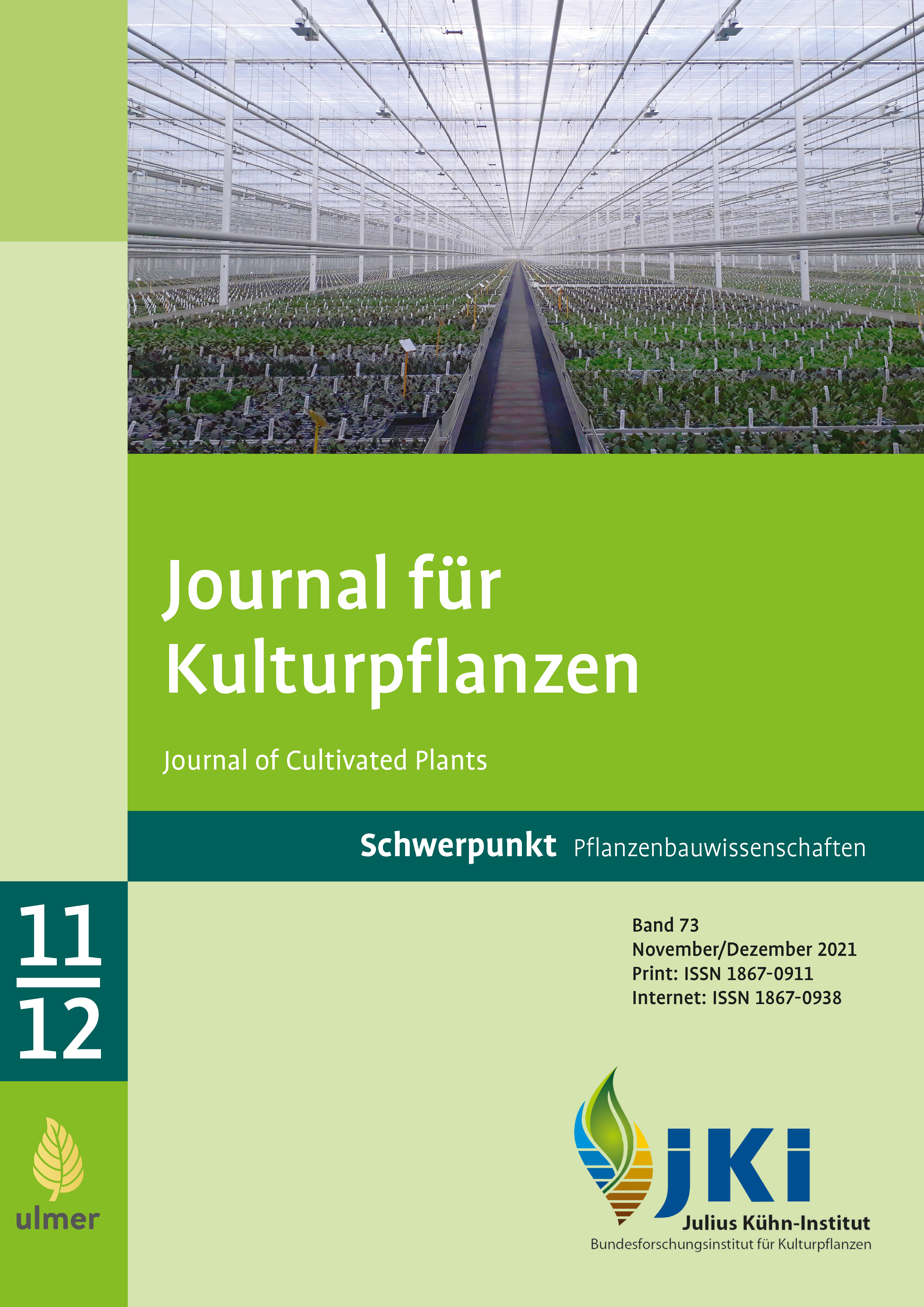Transfer of perchlorate into different plant parts – Can perchlorate contaminations of soils explain perchlorate findings in vegetables and fruits?
DOI:
https://doi.org/10.5073/JfK.2021.11-12.02Keywords:
Mairübe, Perchlorat, Radieschen, Spinat, Mangold, Tomate, TransferAbstract
High perchlorate findings were reported in fruits and vegetables from different countries in 2013. It was speculated that mineral fertilizers were responsible for the contamination because perchlorate was detected in substantial amounts in some fertilizers and is generally available for plant uptake. In principle, other source such as the growth medium, washing water, contamination during packaging or treatment of products to increase shelf-life of fruits and vegetables are potential contamination sources as well.
A greenhouse trial was conducted with different vegetables to investigate the perchlorate uptake and transfer between different plant organs. For this purpose, spinach (Spinacia oleracea) and Swiss chard (Beta vulgaris) were grown as leafy vegetables, radish (Raphanus sativus) and May turnip (Brassica rapa L. var. rapa) as root vegetables and tomato (Solanum lycopersicum L.) as a fruit-bearing crop. Perchlorate was added to the substrate in concentrations of 0 – 5 – 10 – 100 – 500 μg ClO4-/pot to the young plants (two to six leaf stage). The investigated species took up almost the applied perchlorate and the highest proportion of 70–100% was detected in leaves. In the bulbs of radish and May turnip only at the higher level of 100 or 500 μg ClO4-/pot low concentrations of perchlorate could be detected. In tomato fruits no perchlorate was detected indicating that no transfer from leaves to fruits occurred, when perchlorate was applied in one dose at the beginning of the experiment. It can be concluded that the majority of perchlorate contained in fertilizers will be taken up by plants and will be stored mainly in leaves. Therefore, leafy vegetables have a high risk to be contaminated by perchlorate while the edible parts of bulb vegetables and fruits show a lower risk to be contaminated when perchlorate was applied at the beginning of vegetative growth. No conclusions are possible if perchlorate-containing fertilizers are applied regularly over the whole vegetation period.
Published
Issue
Section
License
Copyright (c) 2021 Elke Bloem, Kerstin Panten

This work is licensed under a Creative Commons Attribution 4.0 International License.
The content of the journal is licensed under the Creative Commons Attribution 4.0 License. Any user is free to share and adapt (remix, transform, build upon) the content as long as the original publication is attributed (authors, title, year, journal, issue, pages).
The copyright of the published work remains with the authors. The authors grant the Journal of Cultivated Plants, the Julius Kühn-Institut and the OpenAgrar repository the non-exclusive right to distribute and exploit the work.







